The 2020 Family Dining Report
The 2020 Family Dining Report
At Home Run Inn Pizza, few things mean more to us, as a brand, than bringing families together for shared meals. This year has impacted virtually every element of our day-to-day lives – including how and where we dine (both individually and as a family).
To gauge the evolving nature of family dining, we surveyed 1,067 families across the U.S. and asked questions regarding family dining priorities and experiences — delving into family’s at-home cooking behaviors, as well as restaurant dine-in and takeout/delivery patterns (pre, and post-pandemic), resulting in the first annual, “Home Run Inn Family Dining Report.”
What the data provided is not only an encouraging view into the positive, long-lasting potential effects of the pandemic (relative to carving out quality, family time), but a testament to the bond many feel family dining helps to solidify.
Family meals have long provided the occasion for loved ones to come together, communicate and strengthen relationships, and based on the results of the survey, it would appear that families are more eager than they’ve been in years to reprioritize this once sanctified pillar of the family social dynamic.
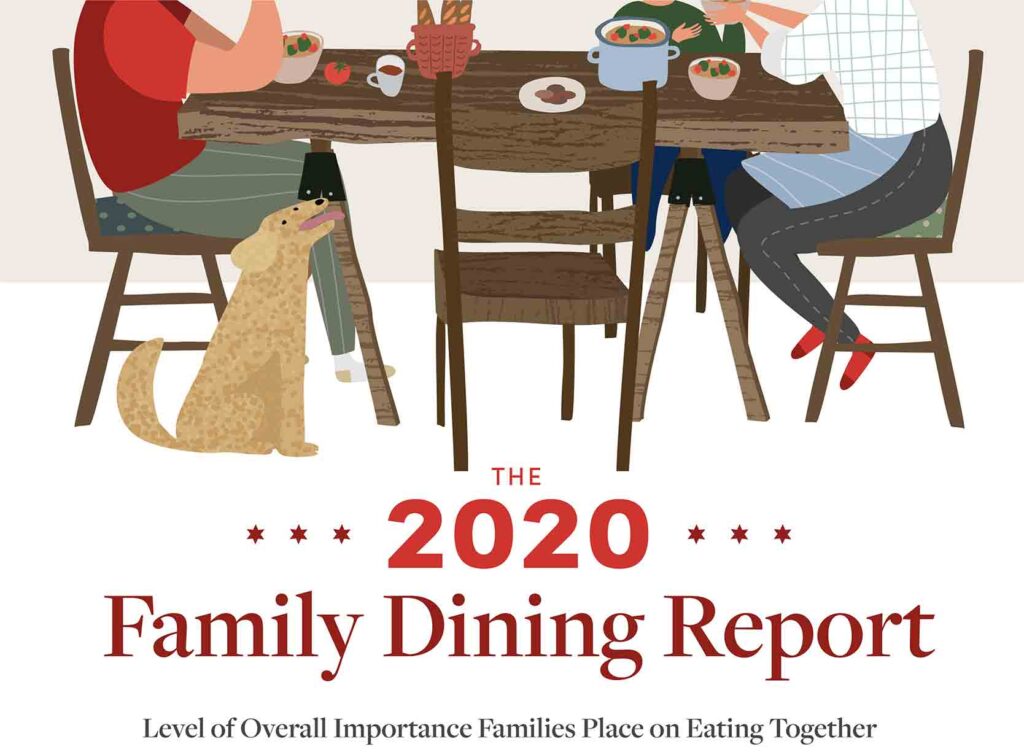
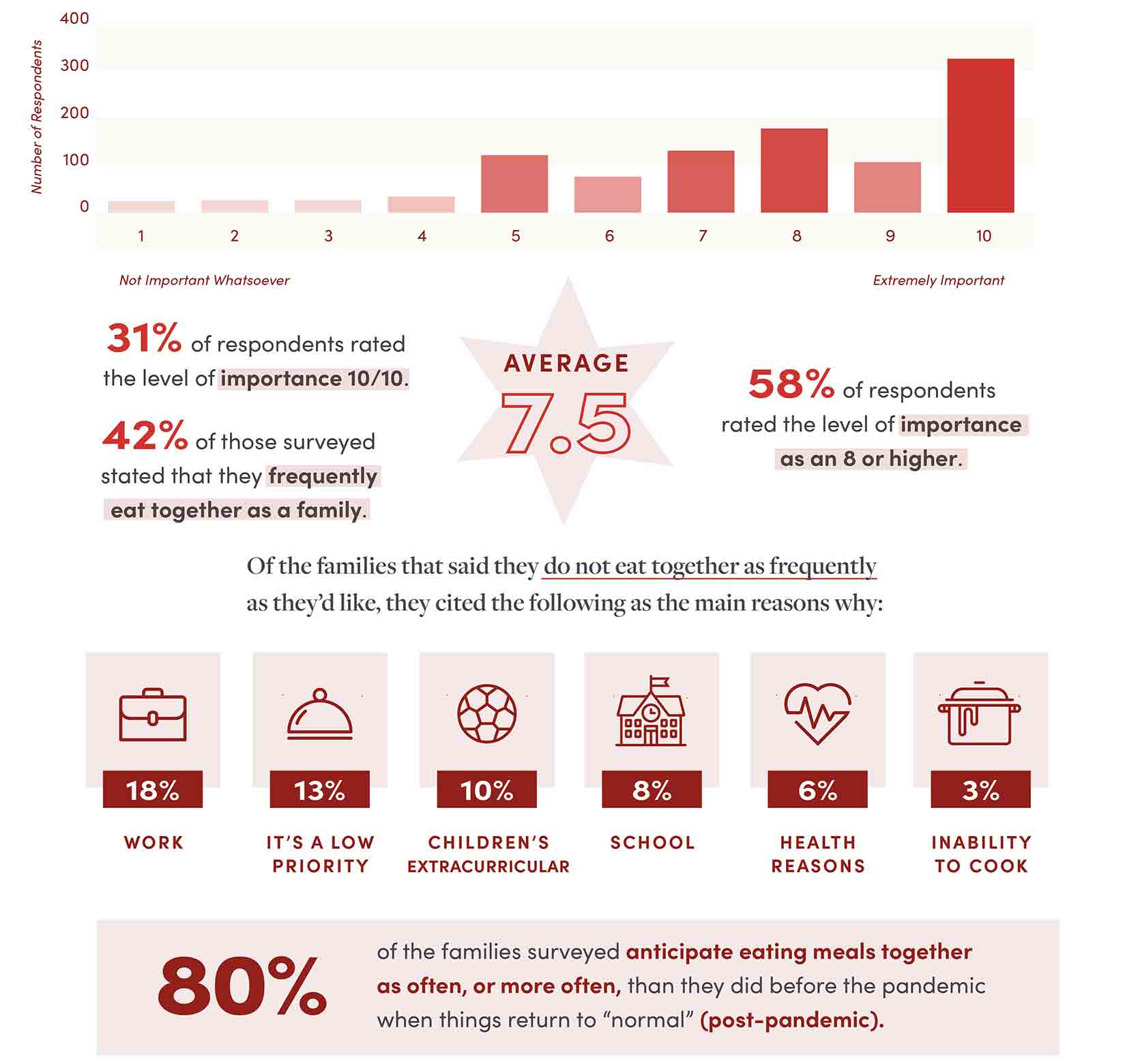
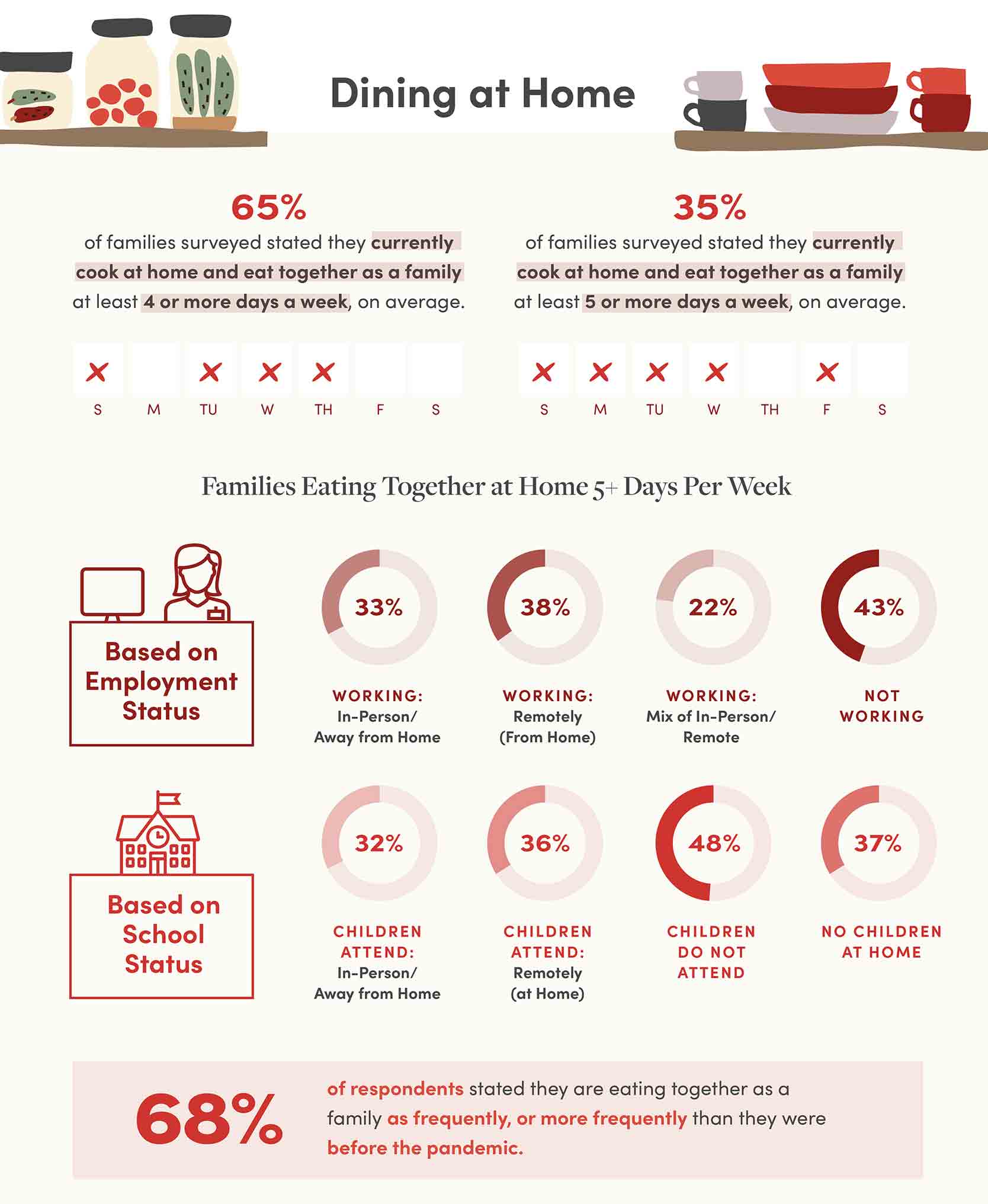
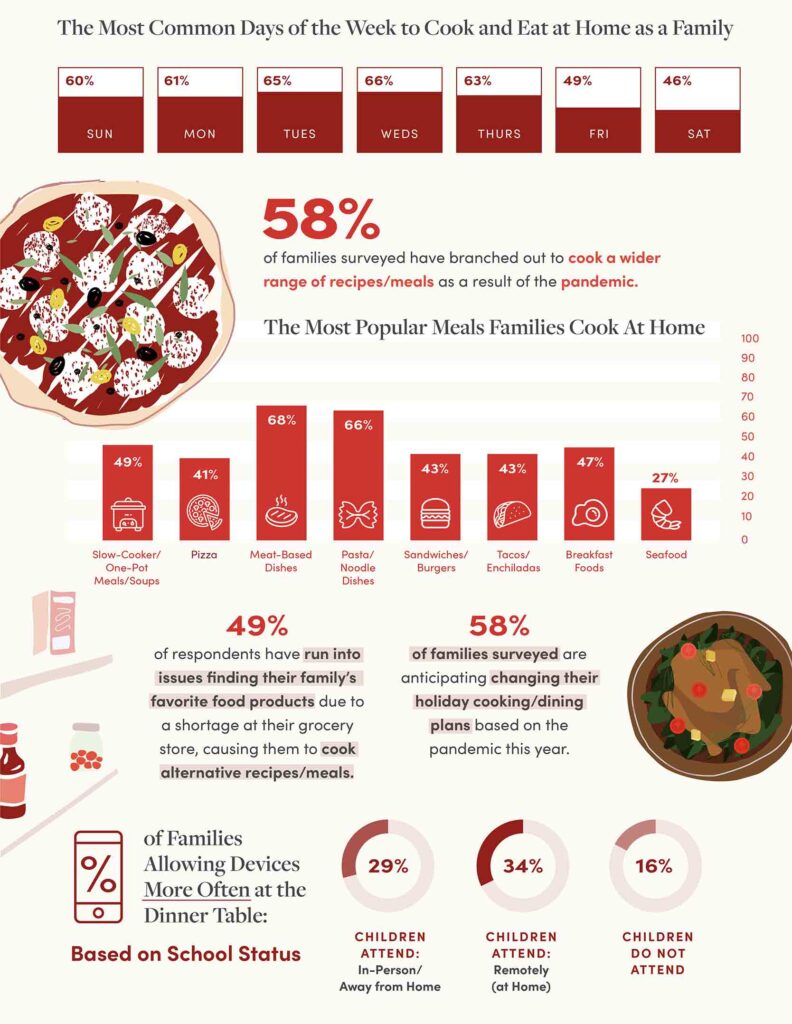
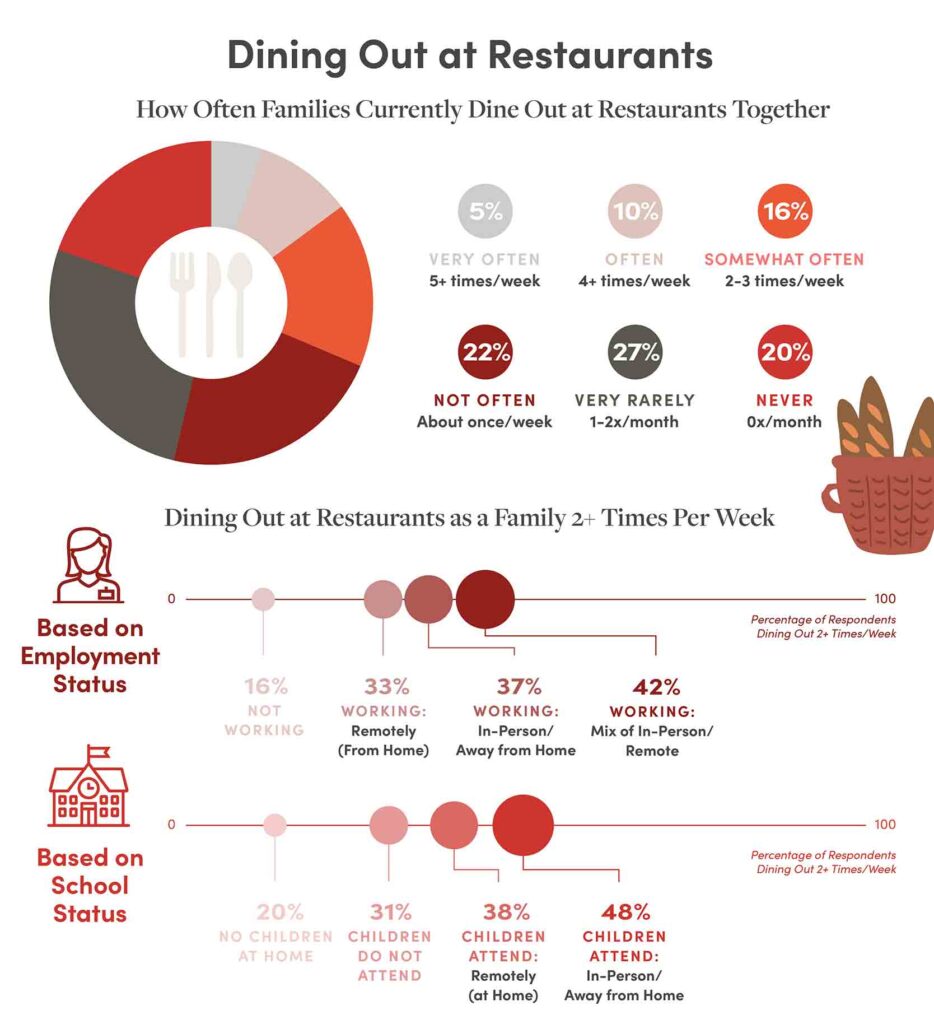
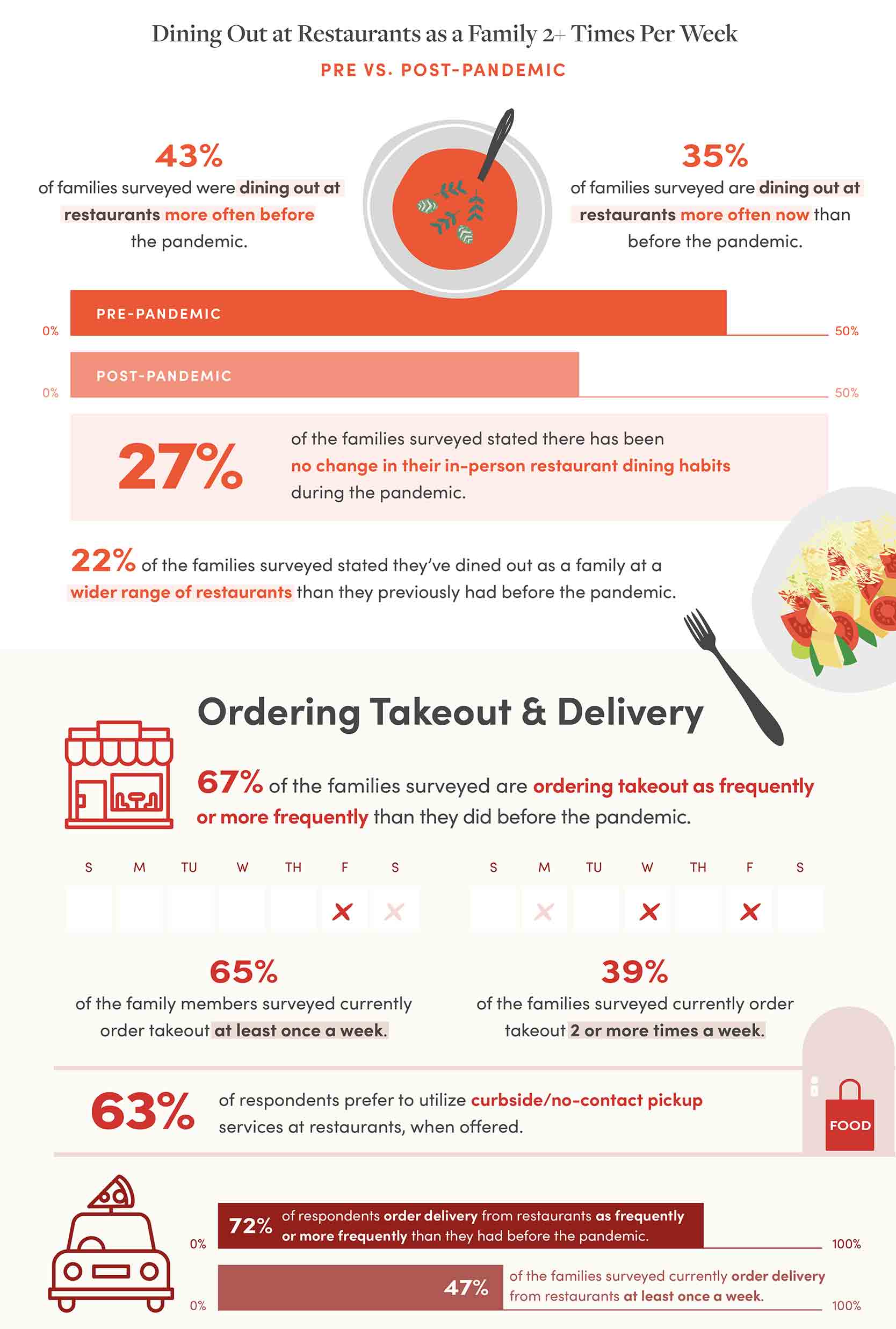
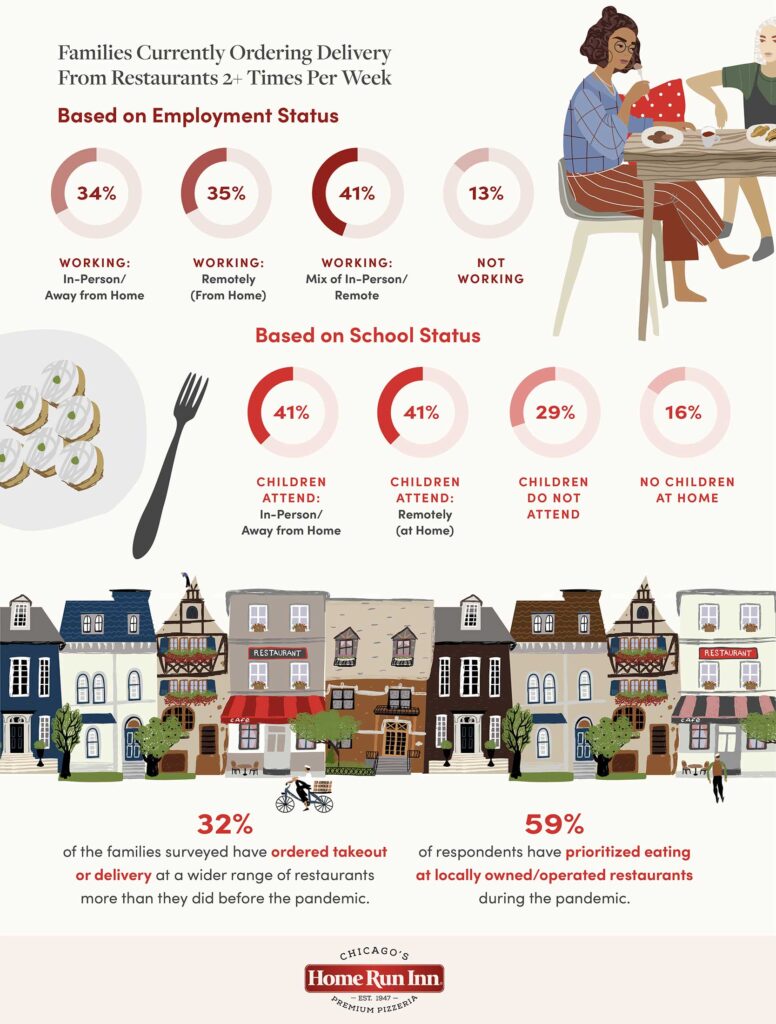
Rating the Importance of Dining Together as a Family
Overall, the families that we surveyed placed a high level of importance on eating together as a family. 31% of respondents rated the level of importance of eating together as a family a 10 out of 10 (extremely important), and 58% of respondents rated the level of importance of eating together an 8 or higher (out of 10). The average score from all families surveyed on a scale of 1 (not important whatsoever) to 10 (extremely important) was 7.5.
The Frequency of Family Meals
42% of the families surveyed felt that they currently eat together as a family frequently. Of the families that said they do not eat together as frequently as they’d like, they cited the following as the main reason(s) why:
● 18% – Work
● 13% – Dining together is a low priority for their family
● 10% – Children’s extracurricular activities
● 8% – School
● 6% – Health reasons
● 3% – Inability to cook
Encouragingly, 80% of the families surveyed anticipate eating meals together as often, or more often than they did before the pandemic — when things return to “normal” (post-pandemic).
Dining Together at Home
Despite the challenging times that many families are facing (and the obvious stresses this can cause), 68% of respondents stated they are eating together as a family as frequently, or more frequently than they were before the pandemic.
When segmenting the data by employment status, family members who are currently not working were most likely to eat together frequently (5+ times per week). Family members currently working a mix of in-person and remote (work from home) were least likely to frequently eat together as a family (5+ times per week).
When segmenting the data by children’s schooling status, families that have children who do not currently attend school are most likely to frequently eat together (5+ times per week). Families with children currently attending school in-person (away from the home) were least likely to frequently eat together (5+ times per week).
The most popular days of the week that families eat together are:
1. Wednesday
2. Tuesday
3. Thursday
4. Monday
5. Sunday
6. Friday
7. Saturday
Cooking Together at Home
65% of families stated they currently cook at home and eat together at least 4 or more days a week, on average. In fact, 36% of respondents cook at home and eat together as a family at least 5 or more days a week, on average.
While many of us can appreciate our family’s favorite home-cooked meals, 58% of the families surveyed in our report have branched out to cook a wider range of recipes/meals as a result of the pandemic. Nearly half of respondents (49%) have run into issues finding their family’s favorite food products due to a shortage at their grocery store, causing them to cook alternative recipes/meals.
One family tradition that’s sure to be impacted this year is holiday gatherings. 58% of families surveyed are anticipating changing their holiday cooking/dining plans based on the pandemic this year.
Dining Out at Restaurants
It may come as no surprise that as myriad restaurants face restrictions and limited ability to be fully operational, customers are finding themselves dining out less often as they had pre-pandemic. Indeed, 43% of families surveyed were dining out at restaurants more often prior to the pandemic.
One bright spot, however, is that as families make the decision to dine out, they’re prioritizing local establishments. 59% of the families surveyed have prioritized eating at locally owned/operated restaurants more than they had before the pandemic.
While many families have adjusted their in-person dining habits, there are certain groups that eat out more frequently than others. Family members who strictly work in-person (away from the home) are most likely to physically dine out at restaurants frequently (2 or more times per week), when compared to families with family members working remotely, or currently not working. Overall, 30% of respondents stated they are dining out at restaurants more often now than before the pandemic.
Additionally, respondents with children attending school in-person were most likely to physically dine out at restaurants frequently (2 or more times per week), as opposed to families with children enrolled in remote learning or not attending school altogether.
As we previously noted, 58% of the families surveyed became more adventurous with the types of food they were cooking at home, however, that adventurous spirit has not translated to in-person dining experiences — with respondents seemingly sticking to their go-to restaurants. Only 22% of the families surveyed say they’ve dined out, as a family, at a wider range of restaurants than they had pre-pandemic.
Takeout, Delivery, and Curbside Pickup
Many restaurants have adjusted their services to accommodate patrons in the wake of the pandemic — utilizing new curbside pickup, takeout, and contactless delivery methods. 72% of the families surveyed currently order delivery from restaurants as frequently or more frequently than they had before the pandemic. In fact, nearly half of the families surveyed (47%) currently order delivery from restaurants at least once a week.
Takeout appears to be even more popular among the families surveyed, with 67% stating they are ordering takeout as frequently or more frequently than they did before the pandemic. 65% of the family members surveyed currently order takeout at least once a week, and 39% currently order takeout from restaurants 2 or more times a week.
Many families are also opting to use contactless options at restaurants – with 63% of respondents stating they prefer to utilize curbside/no-contact pickup services at restaurants when it’s offered.
Looking Ahead
As the data clearly demonstrate, families plan to continue their trend of increased togetherness, relative to shared meals. As a proud family-owned and operated company, Home Run Inn Pizza celebrates you and your family as you sit down, turn off your phones, and share a family meal.
We’d love to see your family dining together! Take a selfie with the family, post it on Facebook or Instagram, and use the hashtag #HRIfamilydining to share your cherished, family moments with the Home Run Inn community!
Survey Methodology
Total Respondents: 1,067
Margin of Error: +/- 3.061%
Country: United States (USA)
Region: All Regions
Gender: All Genders
Gender Balancing: Census
Age of Respondents: 18 – 99+
Age Balancing: Basic Census
